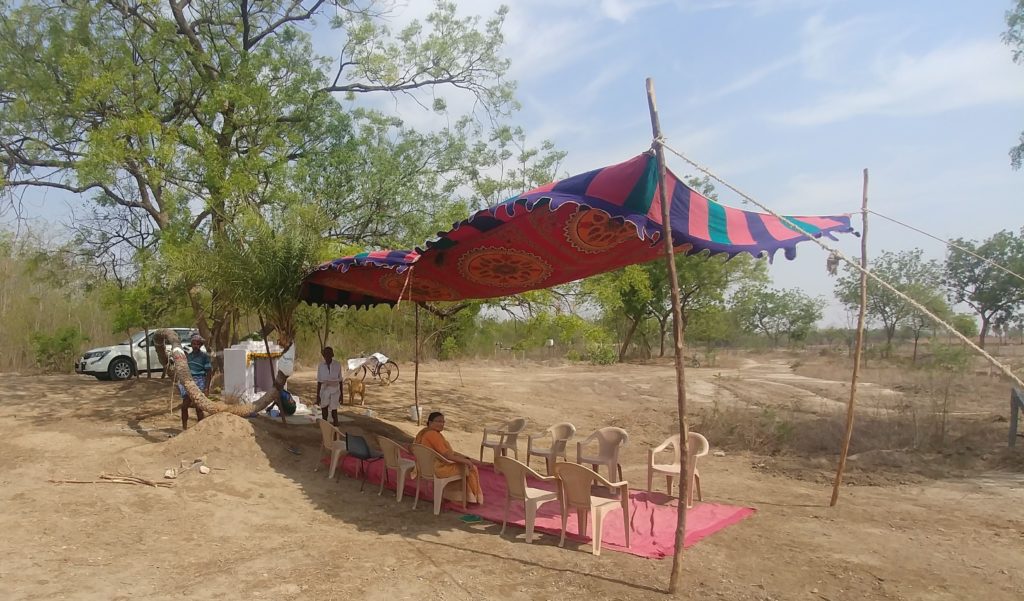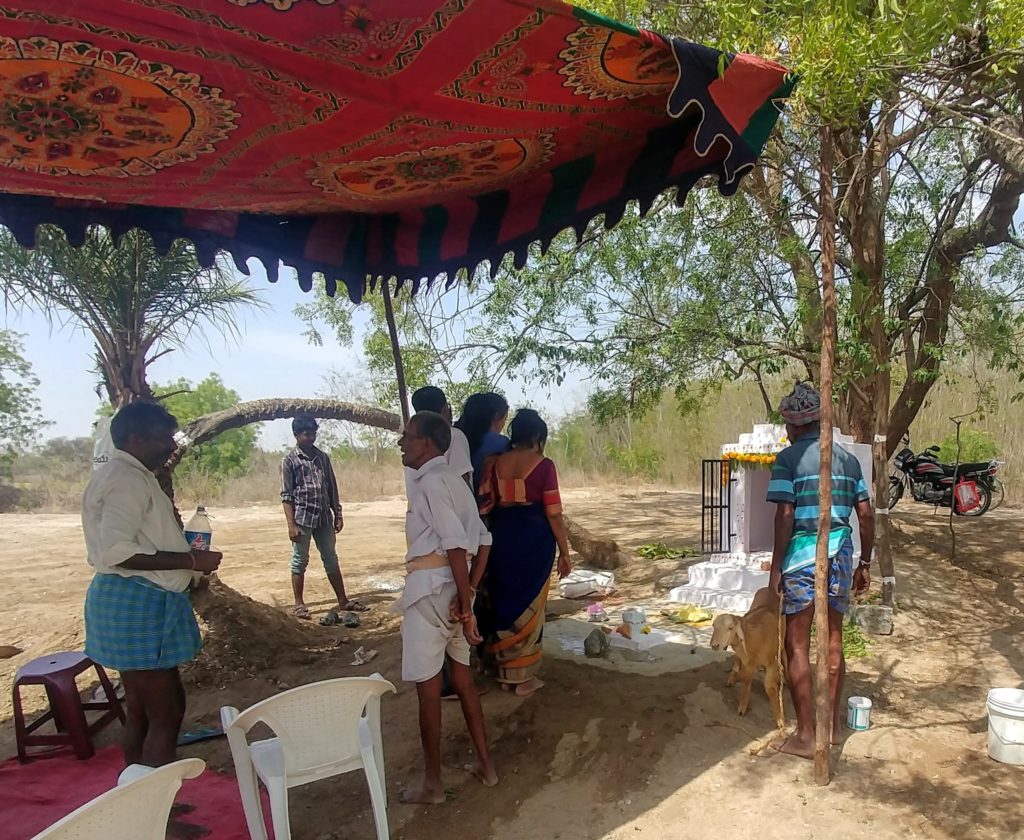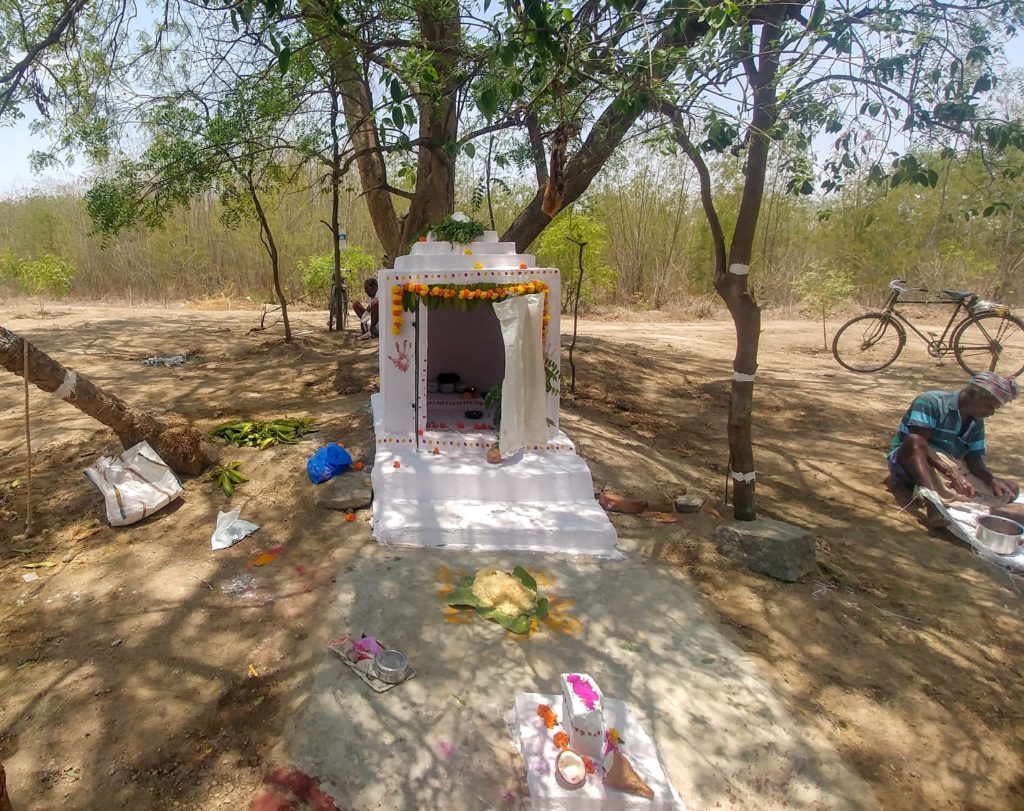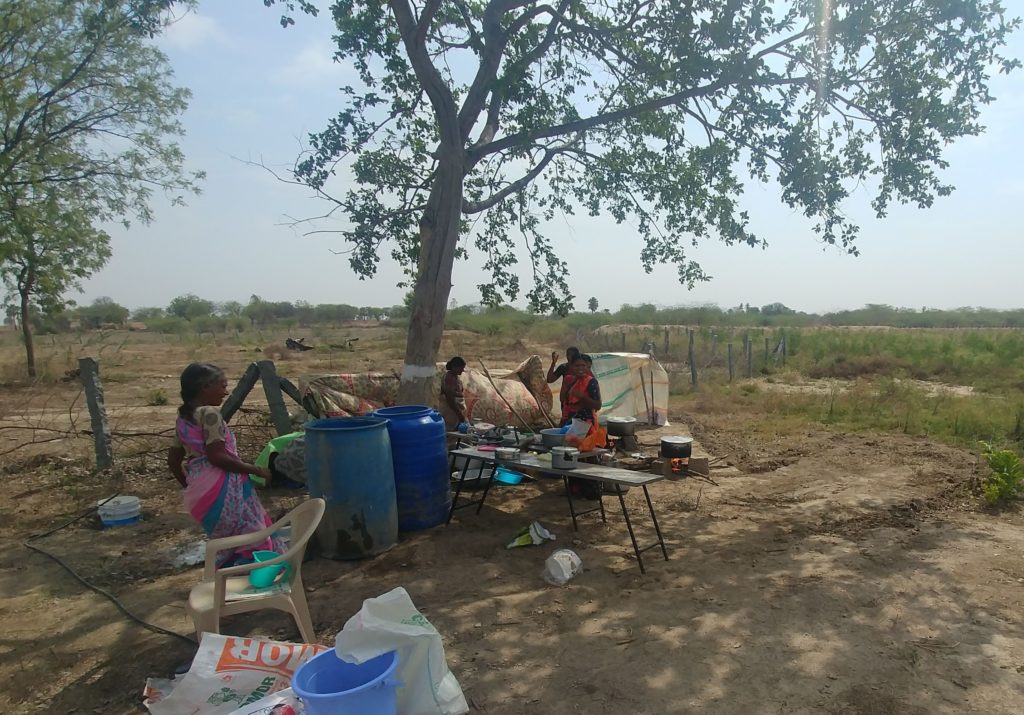A lot of my days in India don’t feel that different than being in the U.S. I work for a software firm where everybody speaks English, is obsessed with Game of Thrones, and spends breaks playing table tennis. We talk cricket (Go Sunrisers!) instead of football, but otherwise my average day is pretty average.
This post is not about one of those days. Neehar had been wanting to show me his grandmother’s village for a while, so when she hosted a lunch that he was going to attend, he invited me to tag along. His family’s property is a large farm, two to three hours outside Hyderabad. On arrival, Neehar and I convinced the manager of the farm to take us on a tour. I’m sure the sight of us traipsing for 45 minutes across uneven ground in 115°F heat, wearing flip-flops and not carrying any water, did nothing to disabuse the villagers of their stereotypes of city people.

After that adventure, I learned that we were there not just for an ordinary lunch, but to sacrifice a goat as part of a puja (a prayer-ritual). This would bless a small temple the family had just built. This temple (and our visit) had rapidly come about in response to a waking dream Neehar’s grandmother had in which she was visited by a goddess. She read it as a sign that the goddess was upset by a long unfulfilled promise to dedicate a temple to her.

We gathered around the temple and pigment was placed on our foreheads. Then the goat was doused with water and fed a last meal of some sort of fluffy grain and a lightly fermented beverage made of palm sap. At one point the goat shook off some of the water and the audience cheered. Apparently this was a sign that the goddess was pleased. Then the goat was beheaded with a remarkably small knife and its head was placed at the entrance, mouth stuffed with a dismembered hoof.

Like me, Neehar’s city-living niece and nephew (ages 7 and 5) were witnessing their first animal slaughter. There was definitely some amusement from the villagers at their distressed response, so I did my best to play it cool. The kids adapted remarkably fast, eagerly following along as their dad used the subsequent butchering as a hands-on anatomy lesson. Once the goat was butchered, the cooking began. A different dish was made from every part of the goat. The standard mutton curry was definitely my favorite, but the goat brain (consistency like scrambled eggs) and the goat head curry (prominent chunks of skull) were both tasty despite their weirdness.


On the ride home, I mentioned my ideas for this post and there was some small concern that I was going to make my friends and their family sound like superstitious country bumpkins. It reminded me a lot of the time I brought a former girlfriend (who was French and living in San Francisco) back home to Williamsport, Pennsylvania. There is definitely a universal commonality to the experience of taking friends to visit your rural origins– acting nonchalant so the hometown folks don’t think you’ve gone soft while worrying that your friends are too citified to appreciate the charms of your coarser past. So I hope that by surviving the heat and eating goat brains, I earned some country cred, but since I still don’t speak any Telugu, I guess we’ll never know.
